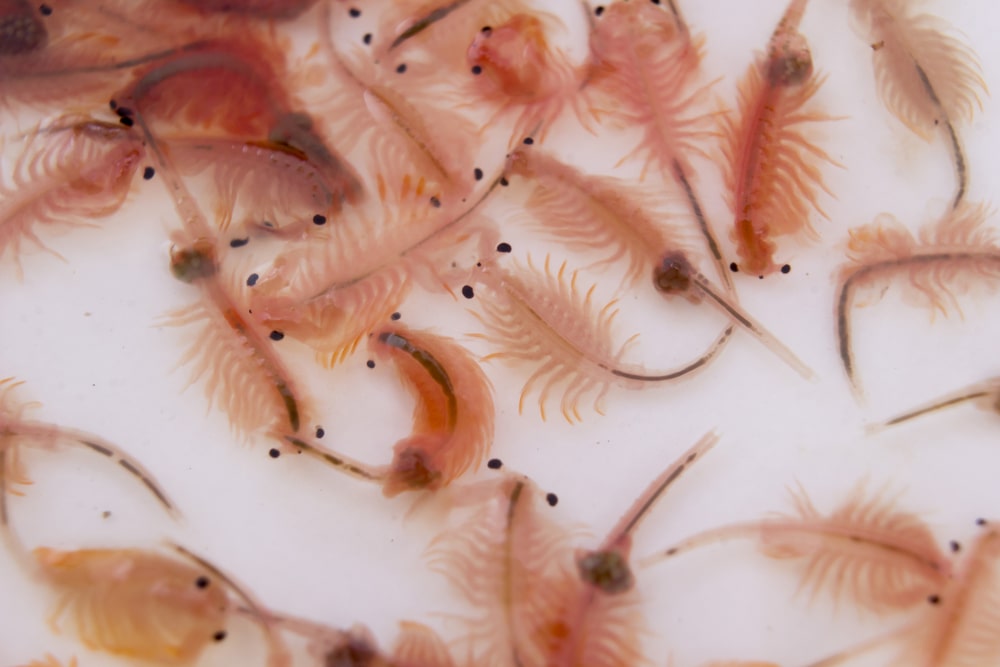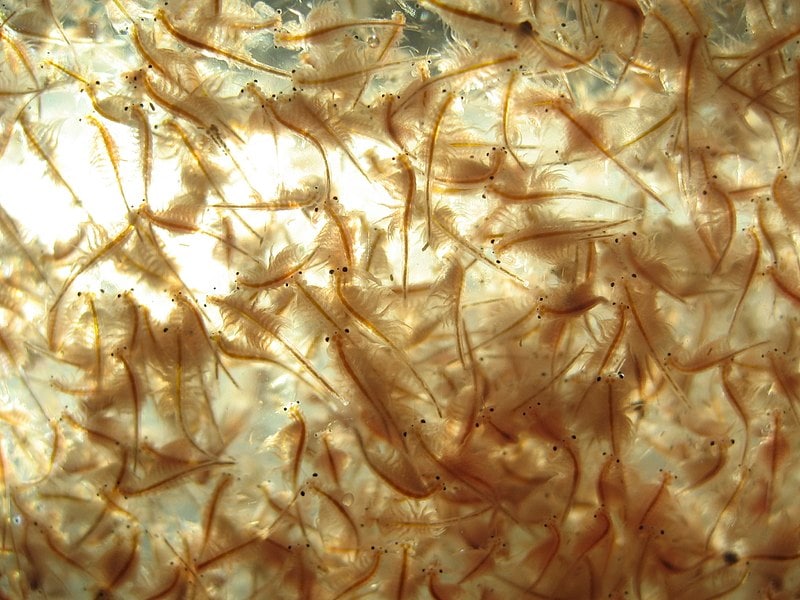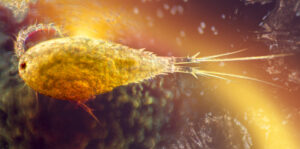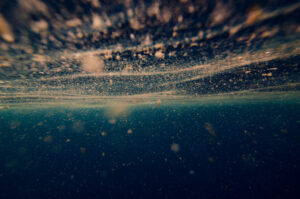Do you feed your saltwater fish flake foods, pellets or frozen mysis? How about live brine shrimp or live fish foods in general? In this article I am going to explain the benefits of feeding your fish live food, specifically brine shrimp (Artemia salina). These creatures can be extremely nutritious for your livestock and are applicable for all levels of marine aquarists.
Background of Artemia Salina Brine Shrimp

Brine shrimp (Artemia salina) are small, filter-feeding crustaceans that live in saltwater habitats. They grow to around 8 mm and take about a week to mature depending on the conditions. After they mature, they can live for several months and produce as much as 75 eggs every day. They live in a large range of different saline habitats inland and on the coast. These creatures have a remarkable resistance to changes in temperature and salinity levels. Their gills allow them to survive these conditions by absorbing or extracting ions as needed. They therefore may live offshore, in lakes or in man-made bodies of water in most parts of the world. To eat, they use structures on their legs to capture phytoplankton.
Benefits to Your Tank
Most people would agree that it is much easier to feed your saltwater fish flakes or pellets instead of live brine shrimp, copepods, amphipods or even frozen food. While dry food has its advantages, it is beneficial to feed your fish a varied diet. Imagine eating only potatoes to get you through each day. While you would survive, you would not be entirely healthy for long. It is the same for the fish in your aquarium; they can survive off of dry food, but they are not as healthy as they could possibly be. Hobbyist avoid feeding live food most likely because it is not as easy to use as dry food, too expensive, or they doubt that it has real positive effects on their tank. If you have been in this hobby for much time, you would have heard the phrase, “you get out what you put in.” This applies to feeding, too.
[LiveFoods]
If you feed your fish well, they will live long with amazing vibrant colors. Otherwise, they will just survive until their shortened lives end. Feeding your fish different varieties of food will promote better coloration and a longer life. As saltwater aquarists, our main goal is to replicate the natural environment of the ocean as accurately as possible in our reef tanks. In natural reefs, fish do not get fed flake food or frozen food. They hunt and eat live organism enriched by nutrients from the natural environments. Why would we not at least attempt to do the same in our aquariums? By feeding live food, you are more accurately replicating the ocean environment from which they naturally live in. Another popular reason for feeding live brine is to meet the needs of finicky fish. Fish such as dragonets, butterflies or anthias are all fishes that are known to be difficult to keep successfully because of their dietary needs. Live food can be used to train these fishes to start eating a certain kind of food (such as frozen). You could also regularly feed live food which would be best for the fish but not required. While most people feed copepods, brine shrimp are also a great option. They are just as useful as rotifers and copepods for food. The downside is that they cannot reproduce or even last more than an hour in a reef tank that is fully stocked.
Copepods are not big enough to feed many aquarium fishes. On the other hand, brine shrimp can be eaten by most or all of the fish in your reef tank.
Live or Frozen Food?
Why is live brine better than frozen brine? It is simply because frozen food in general lacks some nutrients. It may have less than dry food. Some aquarist fix this by soaking the food in food enhancers and dietary supplements. The problem with this is that it is even more unnatural. It could also be more expensive and involve more work. It seems live food is the way to go.
How to Add Artemia salina to a Tank

Feeding the brine shrimp to your fish is quite simple. First, be sure to temperature acclimate them by floating them in a container in your tank. It is good to do this so that the shrimp are not stunned when you first put them in the aquarium. While this is important, brine shrimp are very tolerant to sudden changes. Do not worry about it too much, just keep it in mind. Before you pour them in, turn off all your pumps and powerheads, otherwise, they could just get chopped up in the powerheads or sucked into your filtration system. Now you are ready to put them in. I recommend not dumping them in all at once in the same spot but instead all throughout the tank at different times within five minutes. Unlike copepods, amphipods, or rotifers, you do not want to put them in sump or refugium, or at night. The reason you would do this (with copepods, amphipods, etc.) is so they can avoid getting completely eaten by fish and begin reproducing. However, brine shrimp will most likely not reproduce in your refugium like these other small crustaceans.
Conclusion
Brine shrimp (Artemia salina) (especially nano brine shrimp) are an excellent live food that can be added to any saltwater aquarium. They are more nutritionally complete than most dry or frozen foods. They can also be used to feed or train finicky fish. Like anything else in the hobby, there are many ways to feed brine shrimp so don’t be afraid to try your own methods!






David olson says
Nice
Deidra Banks says
What about scuds?
Raven Scholtz says
Is there a specific kind that you have questions about?
Aquatic showcases says
Very Interesting Read! I have yet to feed live brine shrimp
Matt Kalender says
I had no idea that would live that long. Thanks again for the education.
marcrmz says
If the brine shrimp make it to adulthood in my refugium, they will reproduce 75 eggs per day?
greg.chernoff says
It is highly unlikely they will survive in those conditions for long!
Dusty Petree says
Once I add the live Brine how long do i wait to turn pumps and filter back on?
Dusty Petree says
When can I turn pumps and filter back on after adding live Brine to reef tank??
silverious says
My fish love live brine.
Dori West says
What copods are best for dwarf seahorses?
ROBERT S PALMER says
Got an Order of Nano Brine and Phytoplankton And a little PNS Sauce! ??????
WOOT WOOT ???? COOL THANKS@algaebarn.com
kathyl.mitchum says
How long to wait before turning pumps back on?
Ndatila says
With the frozen brine shrimp, how do I calculate the amount of frozen brine shrimp to feed the fries, putting into consideration the weight of water in the brine shrimp?
Raven Scholtz says
The amount of brine shrimp to feed your fish is going to depend on the type and amount of fish that you have and their sizes.
Macke says
Not sure why you only says saltwater tanks, works just as great to feed freshwater fish.
I have breed artemia for years to feed my freshwater fish.